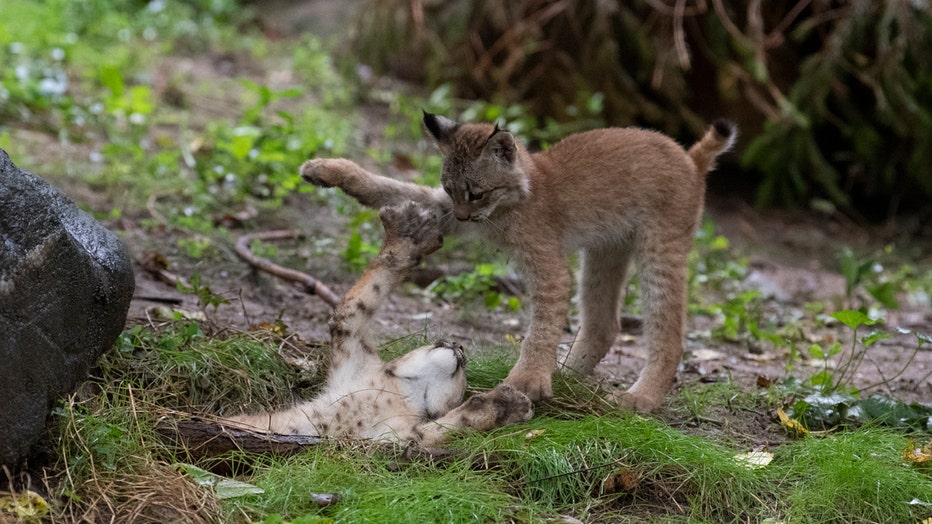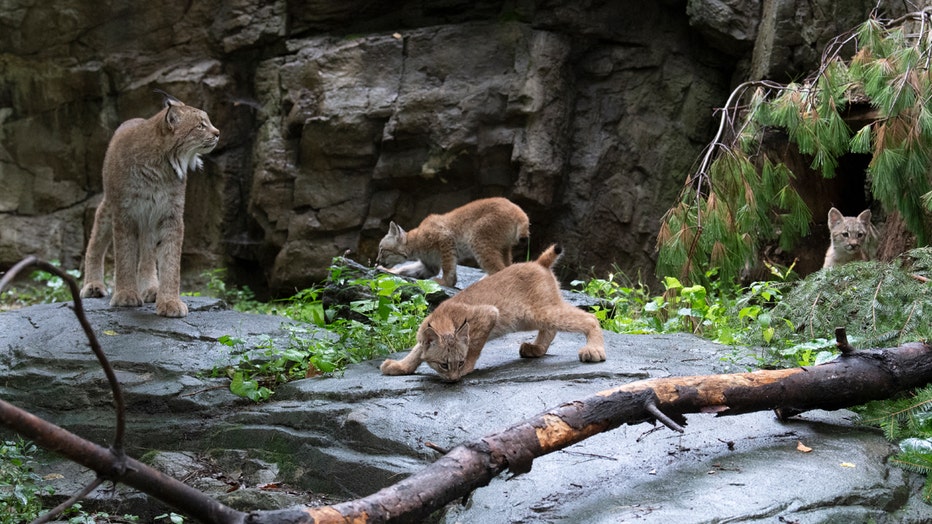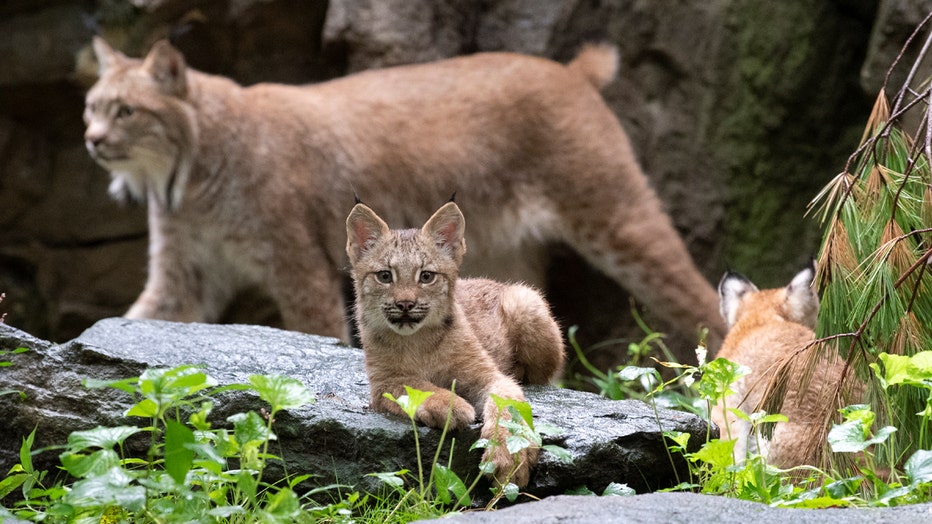Canada lynx cubs debut at Queens Zoo

Lynx cubs in Queens
Three Canada lynx cubs born at the Queens Zoo in the spring are now on display for visitors. The trio's habitat is on the zoo's outdoor Animal Trail. (Source: Wildlife Conservation Society)
NEW YORK - Three adorable and rambunctious kittens are on display at the Queens Zoo. The two female and one male Canada lynx were born in May when all zoos in New York were closed because of the height of the coronavirus pandemic. The cubs have bonded with their mom and are ready to explore their public habitat.
"Lynx cubs are really fun to watch at this age. Their characteristically large paws look enormous in comparison to their size," Queens Zoo Director Mike Allen said in a statement. "Their playful stalking and pouncing is how they learn to hunt in the wild. Our guests will enjoy watching their development and the opportunity to observe these behaviors as the cubs mature."
The Canada lynx (Lynx canadensis) is a medium-sized cat with a thick grayish-brown coat, a short tail, and pointed tufts of fur on the ears and cheeks, according to the Wildlife Conservation Society, which manages the zoo.

Three Canada lynx were born at the Queens Zoo in May 2020. (Courtesy of Wildlife Conservation Society/Julie Larsen Maher)
"Their oversized paws act as snowshoes to prevent them from sinking in deep snow during the harsh winters of their native range," the WCS said in a news release.
Almost all Canada lynx are found in cold-climate forests across Canada and Alaska but smaller populations turn up in northern Maine, northeastern Minnesota, northwestern Montana, northern Idaho, and north-central Washington, according to the U.S. Fish and Wildlife Service.
The International Union for the Conservation of Nature (IUCN) classifies the species as "Least Concern" because lynx populations are quite healthy in most of their range. However, Canada lynx are protected in the United States under the Endangered Species Act because of the potential effects of fur-trapping and loss of habitat.

Three Canada lynx were born at the Queens Zoo in May 2020. (Courtesy of Wildlife Conservation Society/Julie Larsen Maher)
Visitors to the zoo can find the lynx cubs on the Animal Trail. Guests need to buy tickets in advance for a specific date and time. Also, under the zoo's pandemic protocols, visitors must avoid gathering at entrances, exits, exhibits, or along pathways; stay 6 feet away from staff and other guests; and wear a mask at all times.
The Queens Zoo opened in 1968 on the grounds of the 1964–1965 World's Fair in Flushing Meadows–Corona Park. The Wildlife Conservation Society also runs the Bronx Zoo (its flagship property), the Prospect Park Zoo, the Central Park Zoo, and the New York Aquarium.

Three Canada lynx were born at the Queens Zoo in May 2020. (Courtesy of Wildlife Conservation Society/Julie Larsen Maher)
WCS's mission is to save "wildlife and wild places worldwide through science, conservation action, education, and inspiring people to value nature," according to its website.
WCS Queens Zoo | 53-51 111th Street, Corona, New York 11368 | 718-271-1500 | queenszoo.com

Three Canada lynx were born at the Queens Zoo in May 2020. (Courtesy of Wildlife Conservation Society/Julie Larsen Maher)

